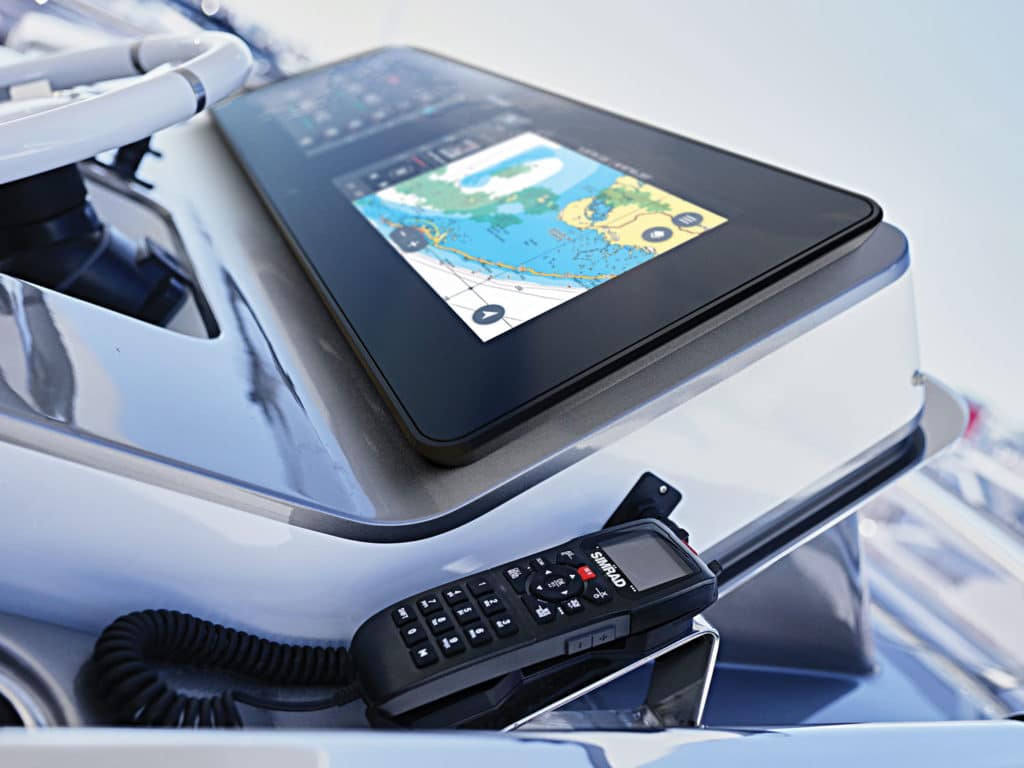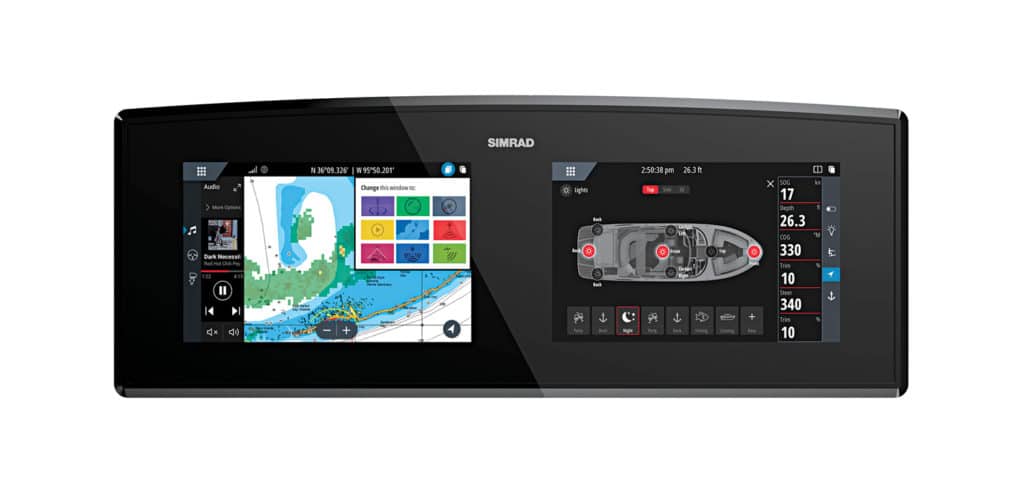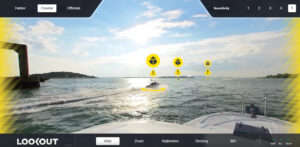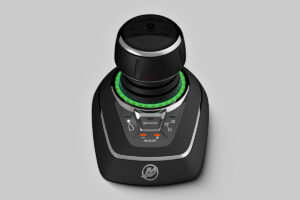
If you’ve ever chartered a yacht, or if you suffer from “10-foot-itis” and regularly upgrade your ride, then you can appreciate the headaches that can unfurl at an unfamiliar helm. Sure, somebody will give you a walk-through of the basics before you set off, but learning to operate a new vessel’s helm still comes with a steeper learning curve than, say, mastering a rental car’s dashboard, even one built by a different manufacturer than your everyday whip.
Why must it be so hard to learn a new helm’s features? That’s the question Navico‘s Information Display (ID) was built to answer. It brings the same level of systems connectivity and integration to boats that drivers find in their automobiles’ dashboards.
The idea has been a long time coming. Modern electronics reached recreational yachts in the 1950s with the advent of analog depth sounders, speedometers and VHF radios. These discrete instruments were useful, but they couldn’t share or leverage information across platforms. When the first recreational-level electronic chart plotter arrived in 1984, things started to change, but it wasn’t until the advent of multifunction displays around 2000 that yachtsmen began networking onboard instrumentation to a shared display and user interface. It’s only been for about 20 years that boaters could see their radar, chart plotter, AIS and GPS all on one screen.
Now, Navico’s Information Display system gives boatbuilders a way of fully integrating, monitoring and controlling all of a yacht’s instrumentation, switching and systems, while providing users with an intuitive graphical interface, cloud connectivity and predefined operating modes.
Navico’s ID system includes a bonded, helm-mounted display (or displays) and a centralized, belowdecks hub that lets the ID talk to almost any onboard system, digital-switching solution or compatible onboard instrumentation using Ethernet, Wi-Fi, Bluetooth, Sonar, USB, CAN or NMEA 2000 connectivity.
And boatbuilders can customize the ID system, including the size, shape of and number of monitors in the display. That ability should let builders eliminate cluttered, mixed-brand helms in favor of a streamlined, automotive-style interface.
The ID system ships with the boatbuilder’s choice of B&G, Lowrance or Simrad software and livery, and has predefined operating modes that offer contextual information based on a boater’s current activity. Predefined modes include tasks such as system checks, while builders can create custom modes for everything from offshore sport fishing to passagemaking and sailing. Each mode automatically populates the vessel information section of the ID’s screen with germane data — say, wind speed and direction for sailing.
“We’re trying to create the same feeling as a dashboard in a car,” says Leif Ottosson, Navico’s president and CEO.

While the bonded display serves as the ID system’s user interface, the connectivity and control magic happens inside the black-box Integration Hub. Installations are designed to be flexible, allowing a builder or owner to spec an ID screen at the helm and a Simrad NSO Evo3 MFD on the flybridge.
The ID is device agnostic, which means it can communicate with different onboard systems such as HVAC, lighting and batteries, but it reportedly works best when spec’d with a Naviop digital-switching system. (Navico purchased Naviop in the summer of 2017.)
“You need a Naviop system to get full benefit from the ID,” Ottosson says. “Without digital switching or integration, there’s no difference between an ID and an MFD. Builders can opt to use any digital-switching system, but it’s not the same rich experience as Naviop.”
The ID presents networked information from a boat’s systems on the display’s right-hand side, while offering a chart plotter display with radar and AIS overlay on the left. This split-screen presentation gives users vast, real-time situational and operational information.
Better still, the system’s Wi-Fi connectivity allows the ID to share networked information with wireless devices and — if internet connectivity exists — with a cloud server using a cellular communicator such as Navico’s BoatConnect system (see sidebar), long-range Wi-Fi or a satellite-communications system. This connectivity allows the ID to send everything from the boat’s location to systems data up to the cloud, a process that in turn lets the system deliver maintenance reminders and assist with diagnostics work.
Cloud connectivity also allows owners to monitor, track and control their yacht and onboard systems via an app, so long as both the yacht’s ID and the user’s wireless device are online.
“You can have the whole boat in your pocket,” Ottosson says, “even when you’re not on board.”
Take the next step: navico.com









